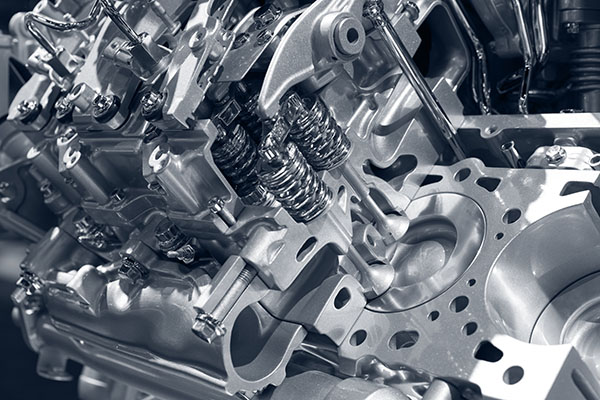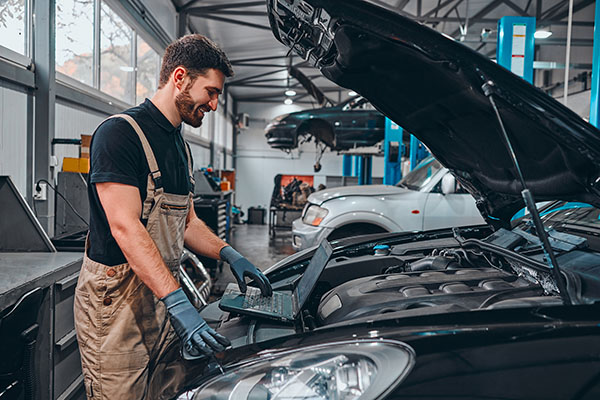Posted on 4/28/2024

Do you hear an unusual noise coming from under your car's hood? Could it be time to replace your timing belt or serpentine belt? What is the difference between these two crucial components? Explore signs that indicate they need replacing, and we'll help you determine which one might be due for maintenance soon. Timing Belt vs Serpentine Belt: What's the Difference? When it comes to your car's engine, both the timing belt and serpentine belt play essential roles, but they serve different functions: Timing Belt The timing belt synchronizes the rotation of the engine's camshaft and crankshaft, ensuring that valves open and close at the right time during the engine's combustion cycle. It's crucial for maintaining proper engine timing and preventing catastrophic damage. Serpentine Belt On the other hand, the serpenti ... read more
Posted on 3/28/2024

Are you a proud owner of a manual transmission vehicle? Whether you're a seasoned stick shift enthusiast or new to the world of manual driving, one thing is for sure: proper maintenance is key to keeping your manual transmission running smoothly for years to come. The Importance of Manual Transmission Maintenance Ah, the manual transmission—a true testament to the art of driving. Unlike its automatic counterpart, which operates seamlessly with the assistance of fluid pressure, a manual transmission relies on the driver's skill and precision. However, this hands-on approach to shifting gears comes with its own set of demands. Manual transmissions require a level of care and attention that goes beyond simply pressing the gas pedal. Without regular maintenance, the very essence of what makes manual driving so exhilarating—its responsiveness and its con ... read more
Posted on 2/27/2024
.jpeg)
Are you torn between choosing a supercharger or a turbocharger for your vehicle? If so, you're not alone. The debate between these two forced induction systems has been raging for years, with enthusiasts on both sides passionately defending their preferred choice. Understanding Superchargers Superchargers are mechanical devices that compress air and force it into the engine's combustion chambers. They are typically driven by a belt connected to the engine's crankshaft, allowing them to deliver immediate power and throttle response. Superchargers are known for their linear power delivery, providing consistent performance across the entire RPM range. However, they can be parasitic, drawing power from the engine to operate, which can affect fuel effi ... read more
Posted on 1/27/2024
.jpeg)
Brakes are a critical component of any vehicle, ensuring the safety of the driver and passengers. The most common types of brakes found in cars are disc brakes, which consist of brake pads and rotors. Understanding how these parts work together is essential for anyone interested in the basics of automotive care. The Role of Brake Rotors Brake rotors, also known as discs, are the large metal discs visible behind the wheels of your car. When you press the brake pedal, the action is translated into physical force that applies the brakes. The rotors play a pivotal role in this process. They provide a surface against which the brake pads can press to slow down or stop the vehicle. The Function of Brake Pads Brake pads are the components that press against the rotors. They are t ... read more
Posted on 12/5/2023

As winter descends and temperatures drop, ensuring your vehicle is winter-ready becomes paramount for a safe and smooth driving experience. At B & L Automotive, we understand the challenges that winter conditions can pose, so here's a comprehensive guide on how to winterize your vehicle for the chilly months ahead. 1. Check Your Antifreeze Levels Antifreeze, or coolant, is essential for preventing your engine from freezing in cold temperatures. Ensure your antifreeze levels are sufficient and that the mixture is appropriate for winter conditions. 2. Inspect Your Battery Cold weather can take a toll on your vehicle's battery. Check for corrosion on the terminals, ensure secure connections, and have your bat ... read more
Posted on 11/28/2023

As a responsible car owner, it is widely recommended to prioritize regular maintenance of your vehicle. Performing routine maintenance tasks such as oil changes and spark plug replacements not only ensures optimal vehicle performance but also a multitude of benefits as you will discover below. Regular Oil Changes The fluid to rule them all, oil plays a pivotal role in ensuring smooth and efficient performance. Oil changes, in accordance with manufacturer recommendations, are crucial in preventing the accumulation of harmful sludge and contaminants that can compromise engine efficiency and lead to costly repairs. By adhering to a consistent oil change schedule, you safeguard the heart of your vehicle and prolong its lifespan. Air Filter Replacement The air filter serves as the guardian of your engine, shielding it fr ... read more
Posted on 10/27/2023

One often-overlooked hero under your hood is the water pump, tirelessly circulating coolant to keep your engine's temperature in check. But it's time to change that - let's dive in and decode the secrets your car is trying to tell you when the water pump is having issues operating. The Water Pump Explained Think of the water pump as your engine's personal temperature regulator. It pumps coolant through the engine, radiator, and heater core, maintaining the optimal temperature for smooth operation. Usually, it is powered by a belt or chain directly connected to the engine. This allows it to operate at the needed speed in correspondence to the engine's load. The Warning SignalsCoolant Leak If you spot a puddle of coolant under your parked car, it's a ... read more
Posted on 9/29/2023

Summer break is coming to an end, and it's that time of year again when students across the country gear up to head back to school. While backpacks and textbooks are essential, let's not forget about the ride that will get you there in style. If you're in the market for a cool set of wheels, we've got three perfect picks - fuel-efficient, small, and sporty! 1. 2022 Mazda MX-5: The Sports Car Sophisticate For those looking to make a statement when they pull into the parking lot, the 2022 Mazda MX-5 is the ultimate choice. This sleek and stylish roadster not only turns heads but also delivers an exhilarating driving experience. With its compact size and nimble handling, you'll effortlessly weave through traffic and find parking spots that others can only dream of. Short Spec List:Engine: 2.0-liter 4-cylinder Horsepower: 181 hp Transmission: 6-speed manual or automat ... read more
Posted on 8/30/2023

When it comes to the world of internal combustion engines, two prominent players take the spotlight: diesel and gasoline engines. These powerhouses are responsible for propelling vehicles, machinery, and generators, enabling our modern way of life. Despite their similar basic functionality, diesel, and gasoline engines require distinct approaches to maintenance due to their unique characteristics and operational demands. If you want to learn about what it takes to maintain both and how they differ from each other, continue reading! Fuel Composition and Combustion The first and perhaps most apparent difference between diesel and gasoline engines lies in their fuel composition and combustion process. Gasoline engines rely on spark ignition, where a spark plug ignites a mixture of gasoline and air, resulting in controlled combustion. On the other hand, di ... read more
Posted on 7/28/2023

Rev up those engines and put on your adventure hats because a road trip is just around the corner! But hold on tight because nobody wants unexpected car troubles to rain on their parade. Before you hit the open road, it's time to show your faithful vehicle some love and attention. In this exciting blog, we'll dive into seven warning signs that scream for immediate attention. By taking care of these issues beforehand, you can ensure your road trip is a wild and worry-free adventure, leaving you with unforgettable memories and a car that's up for anything! Strange Noises Unusual noises coming from your vehicle are never a good sign. Whether it's squealing brakes, grinding sounds, clunking from the suspension, or a mysterious rattling, it's important to have them checked by a professional. These noises could be indicative of worn-out components, loose parts, or potential system failures, which require immediate attention to avoid further ... read more